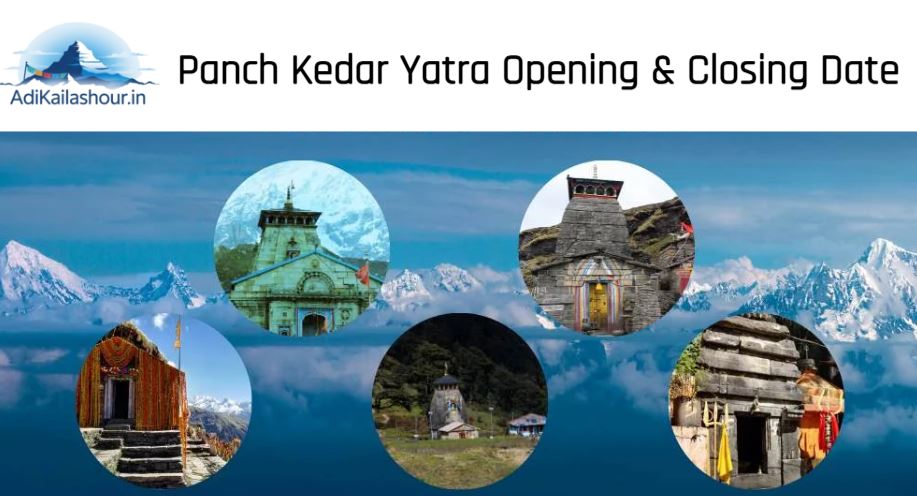The Panch Kedar Yatra is a revered pilgrimage that connects five sacred Shiva temples nestled in the magnificent Garhwal Himalayas of Uttarakhand, India. This yatra is an essential spiritual expedition for devotees seeking Lord Shiva’s blessings and a deep connection with Himalayan rituals and natural beauty. The temples involved in the pilgrimage are Kedarnath, Madhyamaheshwar, Tungnath, Rudranath, and Kalpeshwar. Each temple is deeply rooted in mythology and offers a distinct spiritual and trekking experience.
Opening and Closing Dates for Panch Kedar Temples in 2025
| Temple | Opening Date 2025 | Closing Date 2025 (Tentative) |
|---|---|---|
| Kedarnath | 2 May 2025 at 7:00 AM | 3 November 2025 |
| Madhyamaheshwar | 20 May 2025 | 20 November 2025 |
| Tungnath | 2 May 2025 | 4 November 2025 |
| Rudranath | 18 May 2025 at 7:00 AM | October–November (Exact date to be updated) |
| Kalpeshwar | Open year-round | Open year-round |
Note: The closing dates are tentative and may vary slightly each year depending on weather and astrological calculations.
About Each Temple
Kedarnath: Situated near the Chorabari Glacier at 3,583 meters, Kedarnath is the most famous of the Panch Kedar temples. It is also one of the twelve Jyotirlingas, making it a highly significant Shiva shrine. The temple is accessible by trekking or helicopter during the pilgrimage season.
Madhyamaheshwar: Nestled in a lush valley at 3,490 meters, this temple is known for its tranquil surroundings and exquisite Himalayan architecture.
Tungnath: The highest Shiva temple in the world at 3,680 meters, Tungnath is surrounded by stunning mountain views and alpine meadows, accessible via a pleasant trek from Chopta.
Rudranath: Located deep within dense forests, Rudranath offers a quiet and authentic spiritual experience. The temple’s opening is celebrated with elaborate rituals invoking Lord Shiva’s blessings.
Kalpeshwar: Unlike the other temples, Kalpeshwar remains open throughout the year. It is a peaceful cave temple located at a lower altitude and accessible with a short trek from Urgam village.
Best Time to Visit Panch Kedar Yatra
To make the most of the yatra, plan your visit between May and November. The pre-monsoon months (May-June) offer clear skies, pleasant temperatures, and vibrant flora, while post-monsoon (September-November) presents cooler weather and lush landscapes. Avoid the monsoon season (July-August) due to heavy rains and landslides, and the winter months when most temples except Kalpeshwar close due to snow.
Additional Tips for Yatra Planning
- Prepare physically for moderate to challenging treks, especially for temples like Kedarnath and Rudranath.
- Book accommodations and transport well in advance during the pilgrimage season.
- Hire experienced local guides and porters to enhance safety and cultural understanding.
- Carry appropriate trekking gear including sturdy shoes, warm clothing, and rain protection.
- Acclimatize gradually at lower elevations to avoid altitude sickness.
- Respect ecological and cultural sensitivities at the temples and surrounding villages.
Conclusion
The Panch Kedar Yatra is a profound spiritual journey tracing the five sacred abodes of Lord Shiva scattered across the Garhwal Himalayas. Being mindful of the opening and closing dates, especially the short pilgrimage window from May to November, helps devotees and travelers plan a safe and fulfilling pilgrimage. Whether seeking divine blessings, adventure, or cultural richness, this sacred yatra offers a unique Himalayan experience blending devotion, nature, and heritage.

